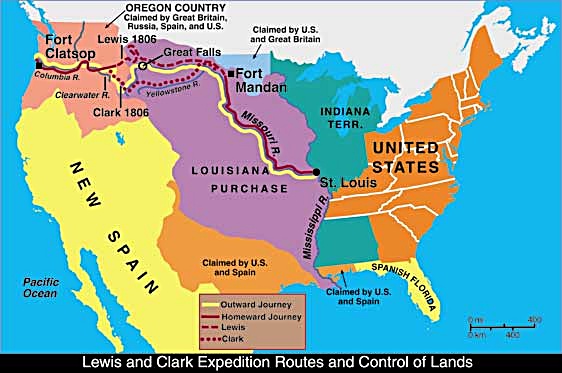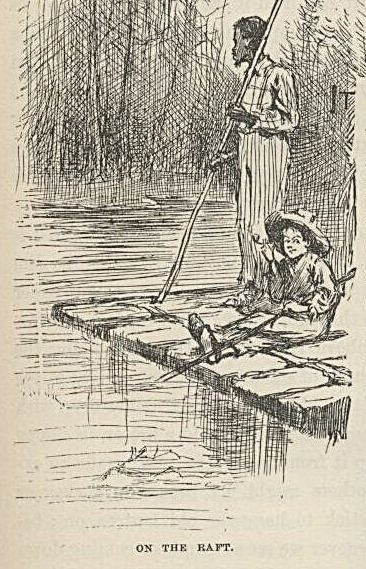Old Man River
 Sunday, July 8, 2012 at 3:09PM
Sunday, July 8, 2012 at 3:09PM If the United States were a rectangular biscuit, and you wanted to share half with a friend, you could hold it in your two hands and break it in half, west and east, simply along the dividing line of the Mississippi River. IE, the U.S. (lower 48 states at least,) is split roughly in half by the north-south line of Old Man River, the 4th longest river in the world.
[1] From Washington State Command Center(Indeed sometimes when I can’t get to sleep, I picture in my head the US and try to name all 50 states, starting with northeast: Maine, New Hampshire, Vermont…. I know there are 26 states east of the Mississippi and 24 west of the river. I’m usually asleep by Arkansas.)
I quoted Langston Hughes a few weeks ago in this column, on the Dream Deferred. He wrote a great poem about rivers, which begins:
I’ve known rivers:
I’ve know rivers ancient as the world and older than the flow of human
blood in human veins.
My soul has grown deep like the rivers…
It’s hard to think about the Mississippi River without hearing the deep voice of another black man, Paul Robeson, singing “Old Man River:” “…I’m tired of living, and scared of dying, but Old Man River, he just keeps rolling along.”
Black dockworker Joe sings this song in the great American musical Showboat, an amazingly honest look (for its time – 1927) at race relations, on a Mississippi River paddlewheel show boat. (Think “Can’t Help Lovin’ That Man of Mine,” “Make Believe.”) The Mississippi ends its 2500-mile journey from Minnesota to the Gulf of Mexico in the deep South, so it’s not surprising that it appears in many stories of black and white America. Just think of Mark Twain’s Huck Finn (1884), who meets the escaped slave Jim on an island in the river, defies convention by traveling with him, hiding him, and ultimately aiding in his freedom, all along the river, which is practically a character in the novel itself. This river understands the slave’s life: “Tote that barge, lift that bale, get a little drunk and you land in jail. I gets weary and sick of trying, I’m tired of living…..” The river knows, and just keeps rolling along.
 [2] From National Geographic SocietyThe Mississippi is at the heart of America, not only geographically, but historically. Its wide course formed a boundary line of New Spain and New France and now serves as the boundary for eight states. Control of the river turned the course of the Civil War. Like the blood flowing in the veins of Hughes’ poems, the river and its major tributaries the Ohio, the Illinois, the Tennessee, floated settlers west and south from Pennsylvania to the frontier. Explorers Lewis and Clark began their epic 1804, 3700 mile journey to the Pacific at the St. Louis junction of the Mississippi and the Missouri and traveled by water for much of the trip.
[2] From National Geographic SocietyThe Mississippi is at the heart of America, not only geographically, but historically. Its wide course formed a boundary line of New Spain and New France and now serves as the boundary for eight states. Control of the river turned the course of the Civil War. Like the blood flowing in the veins of Hughes’ poems, the river and its major tributaries the Ohio, the Illinois, the Tennessee, floated settlers west and south from Pennsylvania to the frontier. Explorers Lewis and Clark began their epic 1804, 3700 mile journey to the Pacific at the St. Louis junction of the Mississippi and the Missouri and traveled by water for much of the trip.
Not only people traveled the river and its tributaries, but goods also. In fifth grade US History I made a box project of an Ohio River barge, tying together little stick logs that floated in a metal box with real water, carrying a family, dog, trunks, bags of grain, plough, and spinning wheel. So much the more today is the Mississippi a major commerce artery. 500 million tons of corn, wheat, coal, petroleum products, sand and gravel, salt, sulphur, chemicals and building materials travel by barge each year to New Orleans and other delta ports, generating $13 billion in spending. The river is crucial to our economy, busy night and day.
I visited friends in Minneapolis St. Paul a few years ago, the most northern of the large cities founded and formed by this massive river. We picnicked on its banks and visited the northernmost of its 43 dams and locks, at St. Anthony Falls. There the locks take the water from 800 to 750 feet above sea level, the sharpest drop of all the locks. We watched a massive barge carrying grain move slowly into the lock, gates closed, water drained, and lowered down, it continued its journey to the sea. Next came a tiny canoe with two women, a child and a dog. It followed the exact same procedure; rang the bell for the lockmaster, floated in to the lock, gates closed and opened, and down it went.
The rich silt of the Mississippi river forms one of the most fertile farming areas of the nation; hence all that corn and wheat on the barges. Tragically the nitrogen and phosphorus fertilizers used on those crops take part in the southern journey also. Off the delta in the Gulf of Mexico is one of the largest ocean dead zones in the world, hypoxic (low-oxygen) areas caused by those runoff chemicals, stunting or killing all marine life. The dead zone created by the Mississippi phosphates is larger than the state of Connecticut. Cooperative attempts to fix the problem are small and slow between the 31 states in its watershed, the federal government, big agriculture business interests and NOAA, the ocean department that seeks to preserve ocean and gulf health.
And the river carries another deadly product, its own water. Though the Army Corps of Engineers attempts to keep a shipping channel open and safe with dams and locks and levees and spillways and backchannels, the river’s history includes dramatic floods, destruction, death. The hurricanes of 2005, Katrina and Rita, wiped out New Orleans levees, killed over 1500 people, and flooded 80% of the city of New Orleans, which has yet to recover.
 [3] From Les Femmes - The TruthThese last two destructive parts of the river’s story, dead zones and flood, are human induced. The river just keeps rolling along, but we put deadly chemicals in it, we try to force it to go and not to go certain places against its power and might, and we create climate conditions that increase hurricanes and rainfall.
[3] From Les Femmes - The TruthThese last two destructive parts of the river’s story, dead zones and flood, are human induced. The river just keeps rolling along, but we put deadly chemicals in it, we try to force it to go and not to go certain places against its power and might, and we create climate conditions that increase hurricanes and rainfall.
Or don’t. This month parts of the river are at their lowest levels in years; last year the river at Baton Rouge was at 28 feet in July; today it is at 4. No worry, says the Army Corps of Engineers, we keep dredging the deep-water channels. But low snow packs from a warmer winter and widespread drought will make the river go down more before summer’s end. I detect a human hand in this climate problem also.
70 million Americans live within the Mississippi watershed. 18 million get their water from it. All of us consume the corn products (corn syrup, ethanol), grain and chemicals on those barges. And I’ve said nothing about the river’s 127 different species of fish or over 300 species of birds that call it home. None of us can live without rivers and this river.
But it’s been a long time since two boys, black and white, could float down the river free and alone, toward freedom. As Huck says, “There warn’t no home like a raft, after all. Other places do seem so cramped up and smothery, but a raft don’t. You feel mighty free and easy and comfortable on a raft.”
And on a river, we hope.
Copyright © 2012 Deborah Streeter
_______________________
[1] Washington State Command Center
Reader Comments (1)
I love this post, Deborah. I grew up on the Mississippi, in Greenville, MS, and I get a little weepy whenever I cross it. You might enjoy reading this article about a canoe journey when the river flooded in 2011. It was written by Hodding Carter IV, who was an acquaintance in my childhood. His father was Jimmy Carter's State Department spokesperson -- http://www.outsideonline.com/outdoor-adventure/water-activities/paddling/canoeing/57-Feet--Rising.html?page=all.